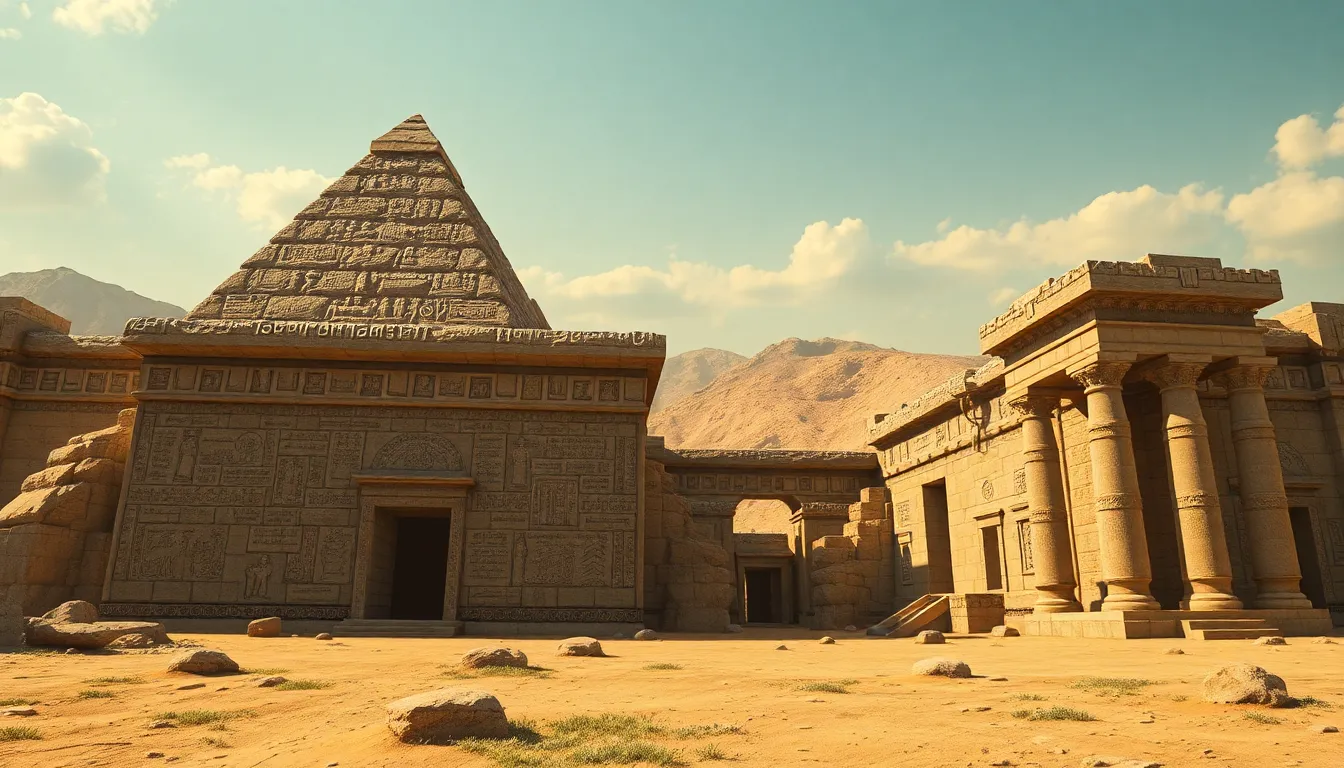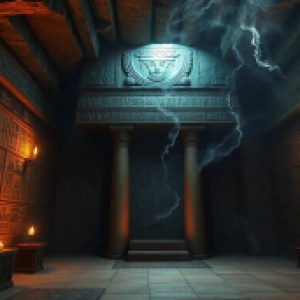The Afterlife Journey: A Comprehensive Overview of Tomb Texts
I. Introduction
Tomb texts are a fascinating aspect of ancient Egyptian culture, serving as crucial guides for the deceased on their journey to the afterlife. These inscriptions, which include spells, prayers, and instructions, reveal the deep beliefs that ancient Egyptians held regarding death and what lay beyond. Understanding tomb texts is essential for grasping how the ancient Egyptians viewed existence, the divine, and the afterlife.
This article will explore the historical context of tomb texts, their various types, the themes and symbolism they contain, their literary and artistic aspects, archaeological discoveries, modern relevance, and their enduring legacy in human belief systems.
II. Historical Context of Tomb Texts
The origins of tomb texts can be traced back to some of the earliest civilizations. Initially, simple grave goods and offerings were placed in tombs to accompany the dead, but over time, the need for more explicit guidance for the deceased became evident.
As dynasties progressed, tomb texts evolved significantly:
- Old Kingdom: The Pyramid Texts emerged, inscribed within the burial chambers of pharaohs.
- Middle Kingdom: Coffin Texts became prevalent, expanding the accessibility of afterlife guidance to non-royal individuals.
- New Kingdom: The Book of the Dead was developed, synthesizing earlier texts and becoming widely used among the elite.
Unlike other ancient funerary practices, which might focus solely on physical offerings, ancient Egyptian tomb texts emphasize the importance of the soul’s journey and the necessary knowledge to navigate it successfully.
III. Types of Tomb Texts
Three primary types of tomb texts stand out in ancient Egyptian funerary practices:
A. Pyramid Texts: Features and significance
The Pyramid Texts are among the oldest religious writings in the world, found in the pyramids of the Old Kingdom. They consist of over 700 spells aimed at aiding the pharaoh in the afterlife. Key features include:
- Inscription on walls of burial chambers
- Focus on royal resurrection and protection
- Invocation of deities for guidance and strength
B. Coffin Texts: Development and thematic elements
As access to the afterlife became a concern for the wider population, Coffin Texts emerged during the Middle Kingdom. These texts were inscribed on coffins and included:
- Spells designed for personal protection and guidance
- Themes of judgment and resurrection
- Greater personalization, allowing individuals to include specific prayers and wishes
C. Book of the Dead: Structure and purpose
The Book of the Dead, developed in the New Kingdom, represents a culmination of earlier texts. It is a collection of spells, prayers, and illustrations aimed at guiding souls through the afterlife. Notable aspects include:
- Scroll format, making it more portable
- Illustrative vignettes that depict scenes from the afterlife
- Focus on the weighing of the heart ceremony, a pivotal moment in the journey
IV. Themes and Symbolism in Tomb Texts
Tomb texts are rich in themes and symbolism, highlighting the ancient Egyptians’ beliefs about the afterlife:
A. The journey of the soul and its challenges
The texts often describe the perilous journey the soul must undertake, facing various challenges and adversaries. Key motifs include:
- Passage through the Duat (underworld)
- Encounters with malevolent beings
- Tests of worthiness and purity
B. Deities and their roles in the afterlife
Numerous deities are invoked within tomb texts, each serving specific functions:
- Osiris: God of the afterlife, overseeing the judgment of souls
- Anubis: Guardian of the dead, guiding souls and protecting them
- Isis and Nephthys: Providing support and protection during the journey
C. Symbols of protection and resurrection
Symbolism is prevalent in tomb texts, often representing resurrection and protection. Common symbols include:
- The ankh, symbolizing life
- The scarab beetle, symbolizing regeneration and rebirth
- Various amulets inscribed with protective spells
V. Literary and Artistic Aspects of Tomb Texts
The language and artistry of tomb texts are integral to their function and impact:
A. Language and writing styles used in tomb texts
Ancient Egyptian hieroglyphs, along with hieratic and demotic scripts, were employed to convey spiritual messages. The texts often use:
- Praise and invocation
- Metaphorical language to depict complex ideas
- Repetitive structures for emphasis and memorization
B. Artistic representations and their meanings
The visual art accompanying tomb texts serves to enhance their messages. Common artistic themes include:
- Illustrations of deities and mythical creatures
- Scenes depicting the deceased’s life and afterlife
- Symbolic representations of resurrection and protection
C. Integration of texts and visuals in tomb design
Tomb design represents a harmonious blend of text and imagery, creating a holistic experience for the deceased. This integration ensures that:
- Texts complement the visual narrative
- Spiritual messages are conveyed through both mediums
- The overall aesthetic is one of reverence and protection
VI. Archaeological Discoveries and Their Impact
Numerous archaeological discoveries have shed light on tomb texts and their significance:
A. Major archaeological sites revealing tomb texts
Key sites such as:
- The Valley of the Kings
- The pyramids of Giza
- The tombs of Saqqara
have revealed extensive tomb texts and artifacts that inform our understanding of ancient beliefs.
B. Contributions of tomb texts to modern understanding of ancient cultures
Tomb texts have provided invaluable insights into:
- Religious practices and beliefs
- Social structures and hierarchies
- Daily life and the importance of the afterlife
C. Challenges in interpreting tomb texts
Despite their significance, interpreting tomb texts can be complex due to:
- Deterioration and damage to texts over time
- Variations in dialect and script
- Cultural context that may be lost to modern understanding
VII. Modern Relevance of Tomb Texts
The legacy of tomb texts continues to resonate in contemporary society:
A. Influence on contemporary views of death and the afterlife
Modern interpretations of death often draw upon ancient beliefs, reflecting a fascination with the afterlife.
B. Tomb texts in literature and popular culture
Elements from tomb texts appear in various forms of media, including:
- Literature exploring themes of immortality
- Films depicting ancient Egyptian mythology
- Art inspired by the visual narratives of tombs
C. Preservation and study of ancient texts in modern scholarship
Efforts to preserve and study tomb texts have led to:
- Increased understanding of ancient languages
- Digital humanities projects that make texts accessible
- Interdisciplinary research incorporating archaeology, history, and anthropology
VIII. Conclusion
Tomb texts are a vital part of ancient Egyptian culture, encapsulating their beliefs about the afterlife and the soul’s journey. Through various forms, from Pyramid Texts to the Book of the Dead, these texts illustrate the complexities of life, death, and resurrection in ancient Egypt.
Future research on tomb texts promises to deepen our understanding of ancient practices and their relevance today. As we continue to explore the intricacies of these texts, we gain insights into the enduring legacy of human beliefs about




